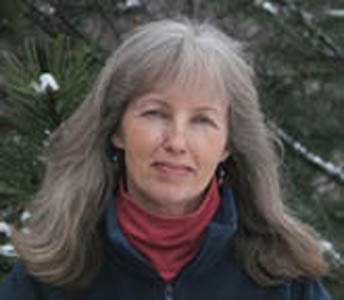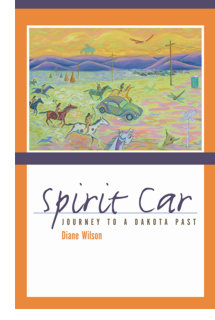Haunted by the Past: Diane Wilson’s “Spirit Car”
Ann Klefstad asked Minnesota Book Award nominee Diane Wilson a few questions about her remarkable memoir and family history, "Spirit Car." Read on for her fascinating reflections on the experience of writing the book


ann klefstadWhen did doing the book first occur to you? What was the triggering event?
Diane WilsonWell, let’s see, writing a book first occurred to me around 1995, when I wrote the story of my mother being left at the Holy Rosary mission school. The story had haunted me–and my three brothers and sisters–all of our lives. My mother was not much of storyteller and she really didn’t like talking about the past. She’d just get a look in her eye and say, “I’m done with all that.”
I didn’t spend too much time thinking about her story in my college days and into my twenties, although it was always there in the back of my mind. When I was raising my own daughter that story became more and more curious to me because I couldn’t fathom leaving a child behind, no matter what. And since I knew my grandparents were good people, then it seemed that this era must have been so different that I couldn’t understand that story without knowing the full context.
There was also the underlying question from my childhood about the difference between my mother’s life and my own. We were the quintessential suburban family–station wagon, baseball games, teacher conferences–so how do you begin to make sense of a cultural leap between the Pine Ridge reservation and Golden Valley?
Since I couldn’t conceive of a way to begin answering that question, I just started following the trail of my mother’s story. Then I wrote an outline for a book following my family’s story back four generations and submitted it to Norcroft for my first writing residency. Once there, I immediately sat down and wrote my mother’s story as if I had been waiting for years to do just that. Recreating her experience was my way of understanding how it felt to be left, to feel abandoned by your family.
I don’t know if I really believed I would actually write a book until I was a couple of years into the research. On one of my trips to South Dakota I found a photo of my mother in a Rapid City museum exhibit about the “Destruction of Tiyospaye” (which refers to the Dakota extended family system). After the shock of that moment sank in, I began to understand the magnitude of the story I was trying to tell. This wasn’t just about my family; they were representative of what had happened to not only the Dakota people but all Native people in this country.
akWhat was the hardest part of doing the book?
dwThe form of the book! It’s almost impossible to learn from a class because even though you can study forms in other books, you still have to create a vehicle that serves your own individual story.
I lost count of the diagrams I created trying to plait the various pieces together–stories, letters, interviews, creative nonfiction, literal history. I worked with writer Cheri Register and she gave me the best piece of writing advice I’ve ever heard: Trust the process. At that point I had a mess of pieces that seemed illogical and impossible to combine so her advice helped me keep moving forward even if I couldn’t see how it was going to come together as a book.
When I finished the first full draft of the manuscript, it didn’t quite work. Editor Ann Regan was endlessly patient and encouraging. Then I submitted a second draft in which the book actually lost ground. That’s when I started reading books mostly to see how the writer worked on a technical level with timelines, transitions, interweaving pieces. The third draft was the charm.
akHow has the experience of writing the book changed your life? What are some things you never would have done without that experience? Are there things you stopped doing as a result of it?
dwThis is a big question. The process of writing and researching the book led me to participate in the 2002 Dakota Commemorative March, which was the big light-bulb-over-the-head moment. I finally understood how everything I had been researching–boarding schools, land allotment, blood quantum–was part of colonization.
The experience of the March also shifted that understanding from an intellectual level to internalizing and recognizing the grief that is passed between generations from traumatic historic events. Since then, I’ve participated in two more marches as one of the organizers. With this understanding comes a sense of responsibility to speak out about these issues, otherwise my silence would feel like a form of collusion.
I have a “longer view” of the world around me, recognizing how important it is to see how the past has created our present and shapes the future. As for things I’ve stopped doing, I no longer see Fort Snelling as an innocuous relic of the past. It stands as a horrific reminder of the ethnic cleansing that has occurred in our own country.
akWas your family supportive of your desire to know more about the past? How did they show that?
dwI’m incredibly blessed with a supportive family. Writing about family in a memoir is one of the most difficult topics I can imagine tackling. Even if they’re supportive, it’s still hard work to write with the fear of what they’ll think.
I showed the first piece about my mother’s story to her and after she read it, she said, “That feels right.” Nothing more, just those few words. With that quiet thumbs-up, I knew I had her blessing for the book.
We had a large family party when the book first came out and it was hugely gratifying to give them this history, which many of them did not know. My mother’s sisters and brother have been wonderful, generous supporters. Pauline–the butter stealer at Holy Rosary–gave me a butter dish. I’ve also met a lot of new relatives who’ve seen stories and old family photos in the paper.
akHow has the native community received the work?
dwOne of my biggest fears was that this book might be perceived as the writing of one more mixed-blood wannabe searching for her Indian princess roots. Or that I might offend the Dakota community with my interpretation of history, especially an event as traumatic and painful as the 1862 war and the subsequent removal of Dakota people from Minnesota.
Instead I have found that this story hits a nerve with many people in the native community because it speaks to the pain of losing our stories, the ancestral land, our native language and traditions. By telling it through the experience of a Dakota family, people can relate to it as a personal story rather than as depersonalized history.
It wasn’t until the book was published that I began to understand how widely this story, or one similar to it, is shared. One of the reasons it is so important to me to share my own story is to convey the words spoken by Lower Sioux historian Dave Larsen, “If you know what was taken away, then you can reclaim it.”
akDo you have a next book? Is it a memoir or fiction or something else?
dwThere’s a couple of projects I’m interested in–collecting the poetry I’ve been writing along the way, writing more essays, and developing a book that would pick up where Spirit Car left off (Son of Spirit Car, perhaps?). By that I mean, once the research is done, the family history recreated, and the lesson of assimilation learned, then what do you do with all that? Ride off into the sunset?
I like to work with big questions, and this one has to do with how to rebuild, or reclaim, or restore what has been lost to native people. That might be writing about the people who are doing that work, it might be fiction, it might be essays. Again, the question of form looms ahead…
akWhat advice do you have for people who are curious about their own family histories? What advice would you give aspiring memoir-writers?
dwDon’t wait! Don’t procrastinate, don’t think it’s something you’ll do tomorrow. In the course of writing this book, many of my contributors passed away. Family histories are the stories that define each family as unique, that show us the road map of where we’ve been and, more importantly, the invisible legacies we carry. One of my favorite quotes is from Thulani Davis, “Getting grounded in what one’s people went through is not to determine what one will be, but it is a reminder not to throw away what has been given, prayed, and paid for in human experience.”
I would also repeat Cheri Register’s advice to trust the process and to always keep an eye on the larger context of your experience. The beauty, and challenge, of our stories is to convey the “truth” of a personal experience while making sense of its place in our culture, in our history, in our selves.